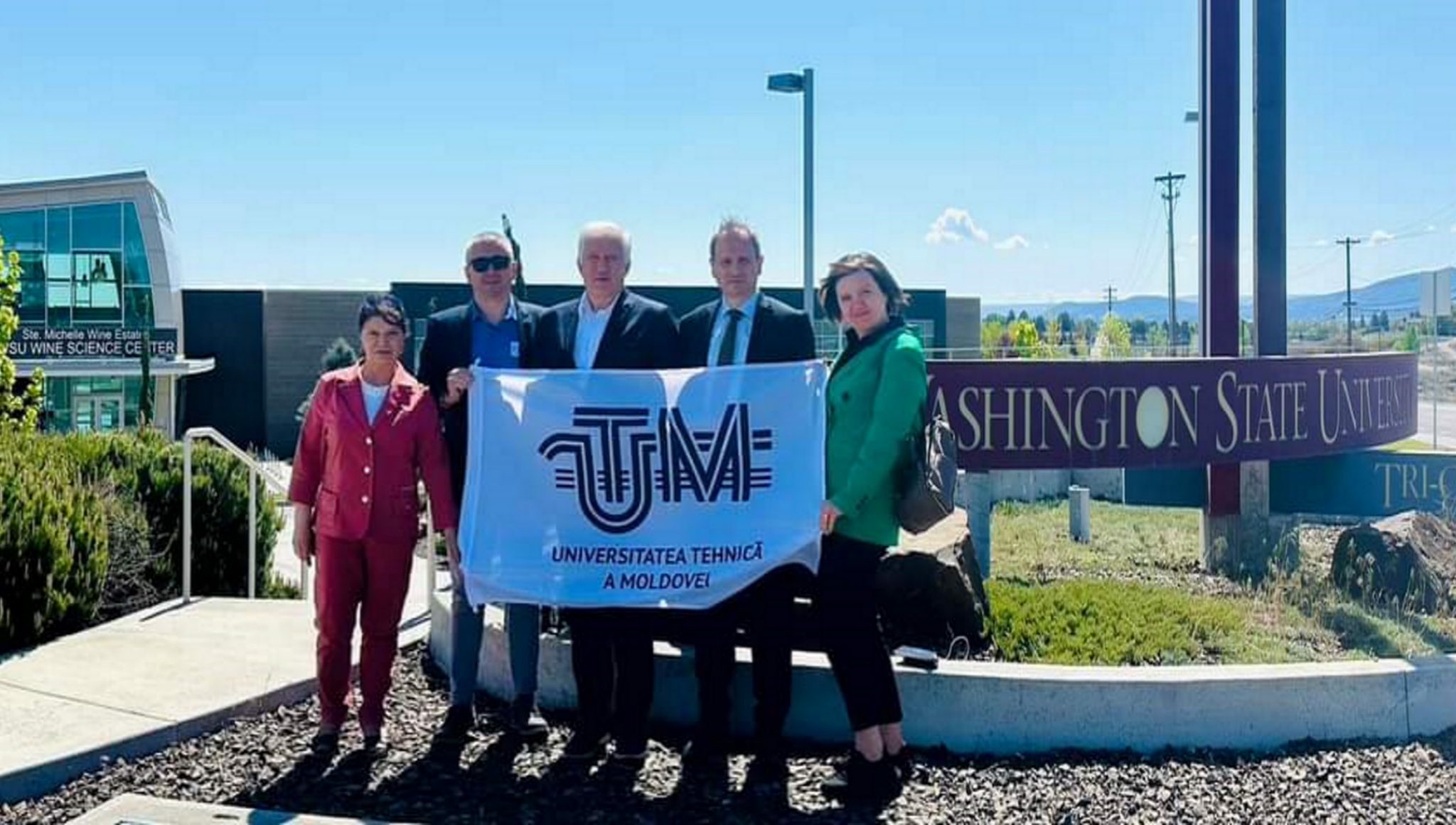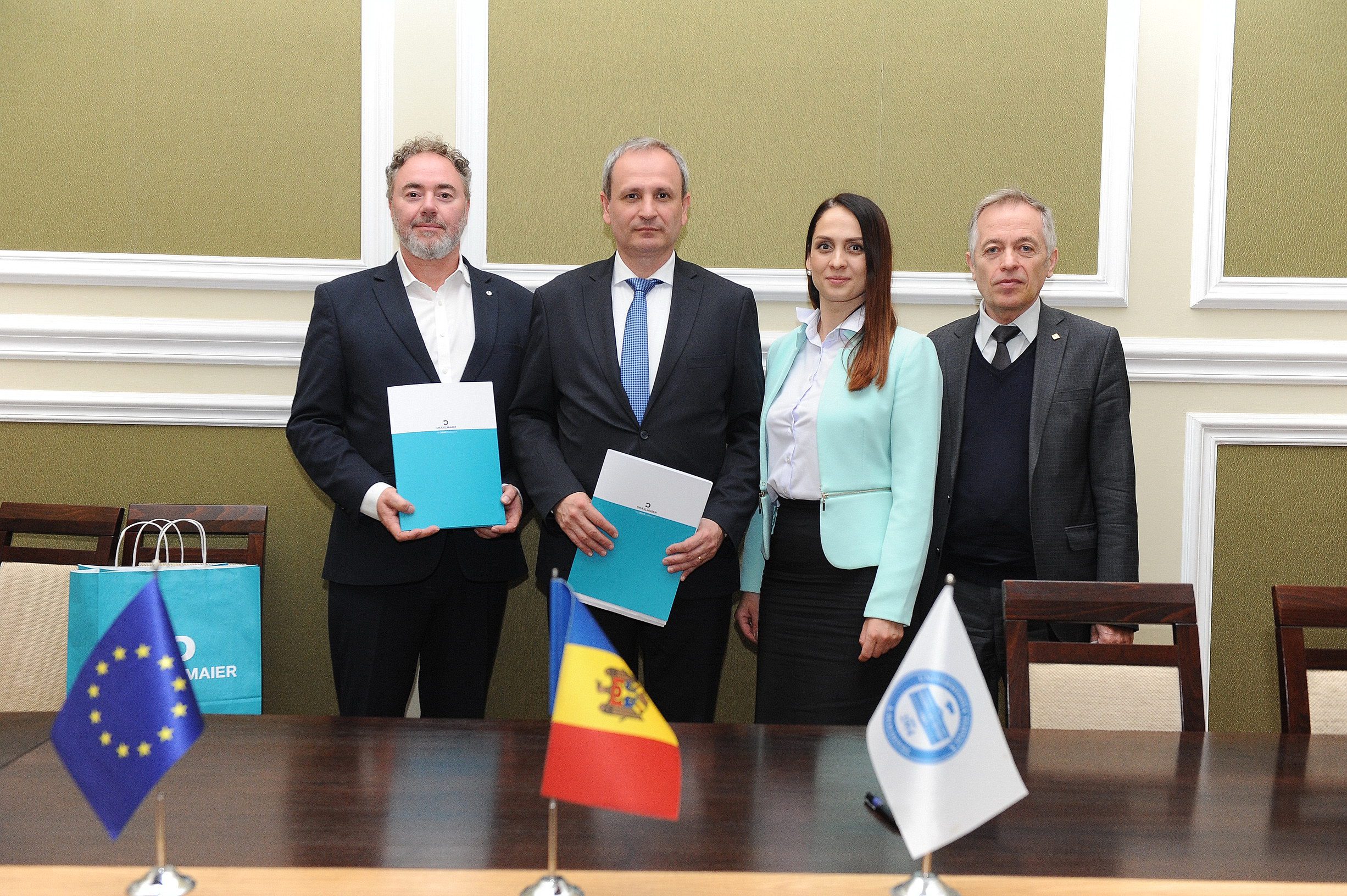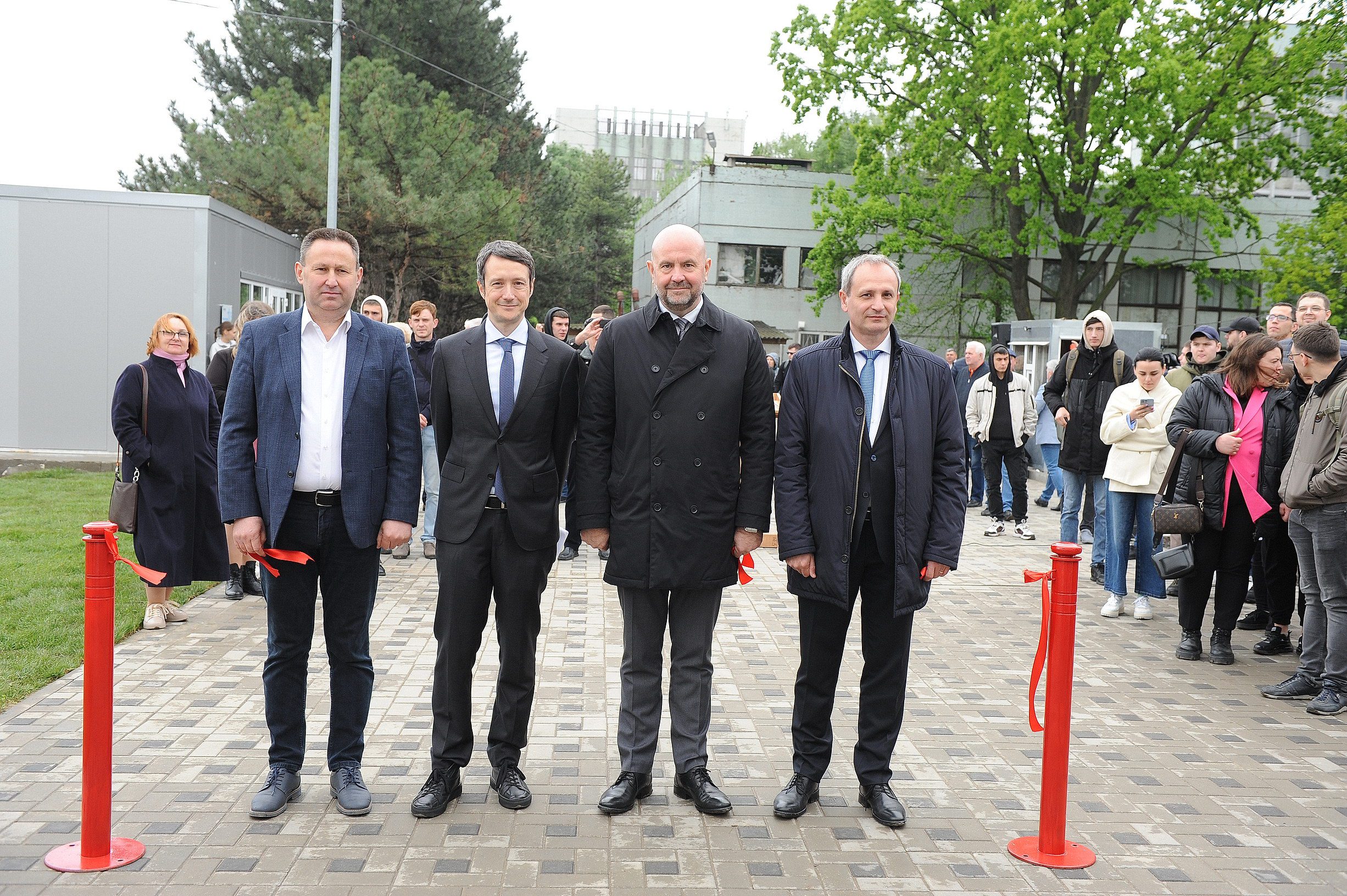The Technical University of Moldova presents the nanosatellite “TUMnanoSAT”, which will be sent to the Japan Aerospace Exploration Agency JAXA and then transported to the USA for its launch into space by the SpaceX spacecraft.
The professors and scientific collaborators from different departments of the Technical University of Moldova working in the fields of Electronics, Radiocommunications, Computers, Fine Mechanical Engineering, Energetics, the study of Space Technologies and Development of Micro/nanosatellites, in tandem with teams of Bachelor, Master and PhD students, contributed to the development of the “TUMnanoSAT” nanosatellite, thus placing the Republic of Moldova among the countries with a high potential in the development of space technologies.
At the press conference organized for the presentation of the nanosatellite, the guest of honor, Minister of Economy of the Government of the Republic of Moldova, Sergiu GAIBU, expressed his interest in the strategic consolidation actions for the objectives of the young generation, appreciating the immense effort of the Technical University of Moldova in the development of space technologies: “Today’s event confirms that we are capable of developing technologies, and the Ministry of Economy intends to provide support and resources in the field of innovation and technology with a view to connect the scientific environment with economic development. The aerospace field is a prevalent one and we, as a country, confirm that we can now create complex technologies. We hope that this will also be a business card for international investors, who will be convinced that we are also capable of launching satellites into space.”
In his message, the rector of TUM, prof., Dr. Viorel BOSTAN, highlighted the need to continuously strengthen the scientific sector: “TUM, being the only technical higher education institution in the Republic of Moldova, is also the only promoter of the development of the space field. This project has a major impact in improving the quality of engineering education based on modern space technologies, inspiring young people to develop and strengthen scientific research in the field of space exploration and the integration of the Republic of Moldova in the community of space technology developing countries. Everything started from a dream, and today, this dream has come true. TUM will continue to make use of these aspirations, contributing to the creation of a modern platform for the development of space technologies.”
In this context, the academician Ion BOSTAN made a short presentation on the history of the concept of the elaboration of the nanosatellite “TUMnanoSAT” – from its beginnings to the outstanding results of today. “TUMnanoSAT” was designed, built and tested between July 2019 and October 2021 under the State Program “Development and launch of the series of nanosatellites with research missions on the International Space Station, their monitoring, postoperating, and the promotion of space technologies”. The academician stressed that the fast pace of development of the global space field will undoubtedly have a phenomenal impact on the strategic objective of the Republic of Moldova, and the perseverance and passion for research of the TUM representatives will contribute to the creation of a favorable setting for the exploitation of talent and innovation in the space field.
The Deputy Director of the National Center for Space Technologies of TUM, assoc. prof., Dr. Nicolae SECRIERU, pointed out several technical details regarding the launch of the “TUMnanoSAT” nanosatellite. Built in accordance with the CubeSat 1U standard, “TUMnanoSAT” is a 10 cm cube weighing 1.150 kg. The nanosatellite will have the following missions:
a) educational:
- testing the sensors of the subsystem to determine the satellite attitude (magnetometers, micro-gyroscopes, solar sensors) for the optimization of the attitude control algorithms
- development of an efficient “satellite – earth station” communication subsystem;
- testing the solar power supply system for obtaining the optimal ways of distributing the accumulated energy;
b) research:
- studying the functionality and behavior of nanosensors in the conditions of the virtual space;
- testing the reliability of electronic components under space radiation conditions.
The launch of the nanosatellite “TUMnanoSAT” will take place in 4 stages:
- Sending the satellite to Tsukuba Space Center (JAXA) for final testing and validation. The integration of the satellite into the JSSOD (JEM Small Satellite Orbital Deployer) will take place there;
- Transporting the satellite to the launch center (most likely in the US);
- Launching the satellite to the International Space Station [Currently scheduled to launch with the SpaceX-25 mission (Falcon 9) – unconfirmed];
- Orbital propulsion of the “TUMnanoSAT” satellite from the International Space Station (from the Kibo module of the Japan Aerospace Agency).
This project has a major impact on improving the quality of engineering education based on modern space technologies, attracting young researchers and students in activities that contribute to the development and consolidation of scientific research in space exploration and the integration of Moldova in the community of space technology developing countries.
The Technical University of Moldova has thus proved that perseverance and hard work can inspire us to perform great deeds. This dream, which today came true, will continue to motivate us to stay enthusiastic and ambitious and to reach for new heights both nationally and internationally.
[av_gallery ids=’100941,100942,100943,100944,100945,100946′ style=’big_thumb’ preview_size=’2048×2048′ crop_big_preview_thumbnail=’avia-gallery-big-crop-thumb’ thumb_size=’2048×2048′ columns=’6′ imagelink=’lightbox’ link_dest=” lightbox_text=’caption’ lazyload=’avia_lazyload’ img_scrset=” html_lazy_loading=’disabled’ alb_description=” id=” custom_class=” template_class=” av_uid=’av-5lulo5n’ sc_version=’1.0′ admin_preview_bg=”]




